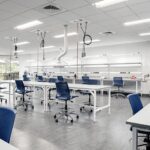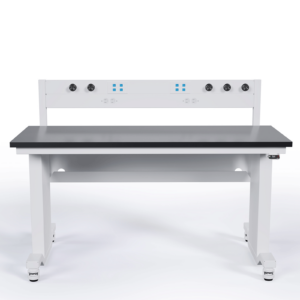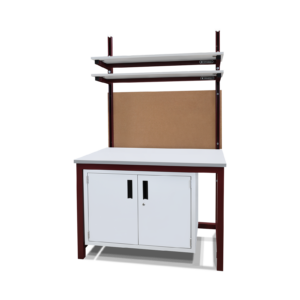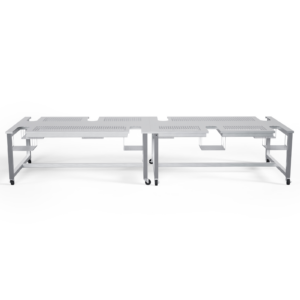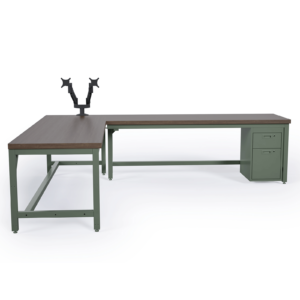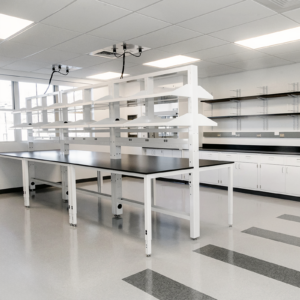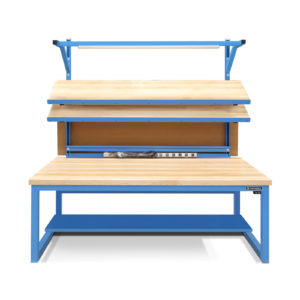2022 Was supposed to be Different. Then Omicron Happened.
Thanks to the widespread deployment of vaccines (in the Western world at least), there was widespread optimism that 2022 would be the year we could see the backside of the Coronavirus pandemic.
Yet it was not to be, at least not just yet.

The Bad News: Omicron Delays the Return to the Classroom…
The rise of Omicron has caused many school districts across the country to consider returning to remote learning, at least for a few months until the peak of the current viral wave passes.
… The Good News: We See a Shift from a Covid Pandemic to a Covid Endemic in 2022
On the other hand, despite spreading like wildfire, the Omicron variant does seem less dangerous overall – particularly for young people – compared to earlier variants, such as Delta.
In particular, recently vaccinated (or boosted) individuals are much less likely to be hospitalized.
Fortunately, the CDC has authorized vaccine use for children aged 5 and up – and a vaccine for children under 5 could be approved by the end of February 2022.
There are also signs that Omicron may be peaking in the US, following in the footsteps of countries that were hit hard earlier, such as the UK.
If Omicron peaks this spring, what comes next?
Fingers crossed, we may shift from a worldwide pandemic to a more controlled endemic phase, whereby the Coronavirus remains a threat but can be controlled with vaccines and therapeutics.
This certainly would be welcome news for parents, teachers, and educational administrators.
Of course, we need to remain vigilant against new outbreaks.
To that end, our best defense is a good offense. To break the cycle of new Covid variants, we not only need to vaccinate more people here at home but also help vaccinate the world’s population, especially in those countries where vaccination rates remain below 10%.
New low-cost vaccines, such as CORBEVAX™ developed at Baylor College of Medicine (which will be produced around the world without any royalty), should help. Also on the horizon are updated vaccines, such as an Omicron-specific shot under development by Pfizer, as well as new pre-print research that cannabis-derived compounds can inhibit the virus, leading some to speculate about a future “pot shot” clinical treatment. (NOTE: these compounds are effective only at lower temperatures, so smoking marijuana doesn’t appear to offer measurable protection against Covid!)
The Big Question: Can We Afford to Continue Educating our Students at Home?

The sudden, dramatic, and unexpected shift to remote education in the spring of 2019 was an ad hoc experiment that will certainly go down in the history books as well as feature in countless future PhD papers that debate the merits of distance learning-based pedagogy.
But, while it was happening, many educational institutions didn’t have a lot of choice – it was either rely on remote learning to pick up the slack or curtail instruction altogether.
The fact that there wasn’t a lot of data to support or refute the benefits and shortcomings of remote education was beside the point. It was an emergency situation.
That’s changing, however, as more data on student outcomes has been collected and analyzed.
Three consequences stand out:
Remote Education is hard on everyone: Teachers, Students, and Parents Returning to Work
The first is that remote education is hard on everyone. Many students found it difficult to keep up with hours of instruction on Zoom, as did their exhausted teachers.
Many families lacked the computer gear and internet connectivity to facilitate effective remote learning, further exacerbating the split between the “haves” and the “have nots.”
And quite a few households also ran out of desk space at home to accommodate all the members of the family – particularly when the parents were also working from home.
Even worse, parents with essential jobs had to scramble for alternative arrangements to look after their kids while they were at work – with the added challenge of having to supervise home learning activities.
Finally, many lower-income students lost access to low-cost or free meals at school, adding additional financial pressure on hard-pressed families or simply leaving some students hungry and undernourished.
Remote Learning Led to Sub Par Educational Outcomes; The Great Catch-Up is Happening Now
During the lockdown, there was a lot of debate on the effectiveness of remote education, but little hard data was available until recently.
Unfortunately, evidence is increasing that remote learning among K-12 students has led to significantly poorer learning outcomes around the world.
Researchers estimate that, worldwide, as much as $17 trillion in future earnings are at risk due to the “knowledge deficits” that accrued due to school closures during the pandemic.
Across the country, and indeed across the world, “The Great Catchup” is underway, as educators hustle to help the “pandemic generation” get back on track as fast as possible before the learning losses are permanent.
It’s for this reason that K-12 schools want to return to full-time in-person learning as soon as possible (albeit with improved ventilation and air filtering) – retaining the use of remote learning tools for after-school learning enrichment and homework tutoring programs.
Hey! Where Did Everybody Go?
Large numbers of students and teachers have gone MIA during the pandemic as well.
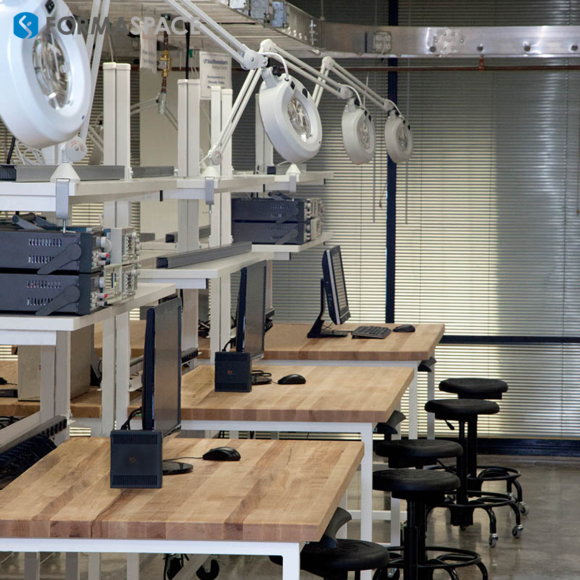
K-12 and University/College Attendance is Down, Way Down
Across the country, students are missing from our classrooms, with overall K-12 school attendance way down.
Enrollment in colleges and universities has dropped by a record amount as well – down by as many as a million students, according to some studies.
Are these changes permanent, or will students come back?
Only time will tell.
But school administrators and planners need to stay alert and create flexible options in their school facilities to accommodate a wide range of possible future outcomes.
The Great Resignation of Teachers and Administrators
Students are not the only ones missing from schools.
Staffing issues continue to plague school districts as increasing numbers of teachers either go on sick leave or quit to pursue a less stressful line of work or take early retirement.
Of course, education is not alone in this regard. All across the economy, workers are quitting in record numbers (a new all-time high was set in December 2021), but many teachers and administrators are facing challenges that are unique to public education, including confusing government mandates and an unprecedented rise in harassment by members of the public at school board meetings and other venues.
Education Checklist for a Successful Transition to the Post-Covid Era
What can be done to address these critical issues facing education today?
R-E-S-P-E-C-T ! Make Your Facility a Place Where the Faculty and Students Want to Be
The first step is a renewed emphasis on establishing trust and respect between teachers, students, administrators, and parents.
Bringing students back into the classroom full-time can help – IF you can demonstrate that the facility is a safe place to teach and learn.
This is a major challenge for architects, designers, and facility planners who are looking for ways to create a safer teaching environment.
Many K-12 educational institutions are taking advantage of new Federal funds to make their interiors safer – with more generous spacing of individuals in classrooms as well as significant improvements in natural ventilation, inside airflow, and HEPA filtration to filter the air and remove virus particles. In one piece of good news, a recent pre-study shows that the Coronavirus loses 90% of its ability to infect within 20 minutes, which could help simplify the process of sanitizing areas, especially those with good ventilation.
(TIP: For more information on how to accomplish these safety goals in school facilities, see our recent article on this topic.)
Another strategy many architects and designers are pursuing is to blend the indoors with outdoors, either by building sheltered atriums that bring the outside in or by designing attractive outdoor areas with functional furniture elements that facilitate teaching outside.
Either approach has the added advantage of introducing naturally calming “biophilic” elements (such as live plants) as well as healthy doses of natural light and transparency in the form of larger windows offering views inside and outside the building.
Stay Flexible to Help Future-Proof Your Facility Planning
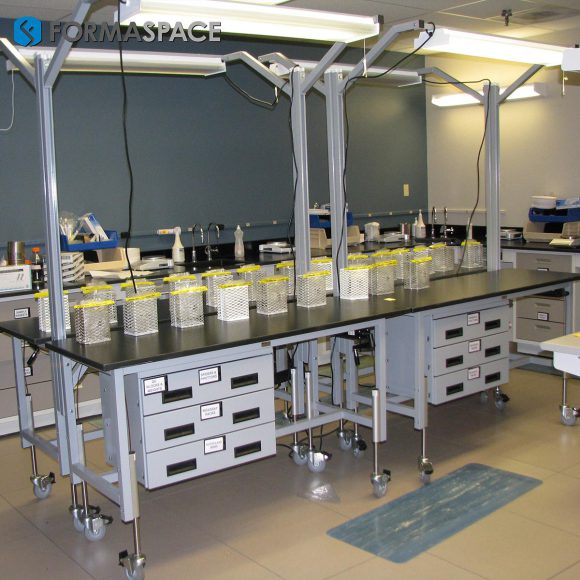
Educational facilities that invested in flexible furniture found it much easier to reconfigure their classrooms and learning environments during the pandemic.
Mobile desks, tables, and laboratory benches mounted on heavy-duty locking casters could be moved around as needed, even several times a day if required.
And height-adjustable tables, desks, and workbenches open up new opportunities to transform furniture to meet the needs of different age groups (with different physical heights) – as well as transform the functionality of individual pieces of furniture, from low profile desks to standing countertops, at the touch of a button.
This flexible philosophy in furnishing design opens up new opportunities for architects, designers, and facility planners to seek ways to re-allocate space throughout the week or even throughout the day.
For example, large spaces equipped with folding mobile desks could be quickly reconfigured into large meeting rooms or gathering/exhibition spaces – by rolling folding desks and tables to the side or into storage areas until they are once again needed.
Adding this kind of flexibility to an existing school environment can significantly increase the productivity of a given floorplate, an important consideration in light of rising real estate costs.
Likewise, modular furniture proved to be an advantage for facility managers who found it was easy to reconfigure the layout of cabinets, workbenches, storage units, and other built-in items as needed – without having to resort to time-consuming remodeling projects typical of traditional furniture installations, such as casework cabinetry.
Help Prepare STEM Students with the Right Skills for High Demand Jobs
As we look ahead to a post-pandemic world, it’s also time for educators to help prepare students for the jobs of tomorrow.
This is particularly true for promising STEM students who lacked access to important enrichment activities, such as hand-on project learning or science lab experiments, during the period they were participating in remote learning activities at home.
Offering access to state-of-the-art lab facilities and makerspaces is an important priority for many schools, particularly in light of the growing demand for engineering and science workers.
The pandemic itself has boosted demand for e-commerce related professions (with AI/machine experts, cloud system architects, and cyber security specialists being in particularly high demand) as well as a renewed growth in field of bio-tech/life science research, including genomic research and pharmaceutical drug development.

Embrace the Future of Education with Formaspace
What opportunities do you hope to see in 2022?
If you can imagine it, we can build it for you – here at our Formaspace factory headquarters in Austin, Texas, where we have been manufacturing exclusively Made-in-America furniture since 1981.
No matter what your unique needs are, we can build a custom solution that will meet your exact requirements.
Formaspace products are available on the GSA schedule (via contract number GSA #GS-27F-0031V), the TIPS (The Interlocal Purchasing System) Purchasing Cooperative (via contract number 2003001) as well as through the MHEC ( Massachusetts Higher Education Consortium (MHEC) non-profit purchasing consortium.
Contact your local Formaspace representative today and find out why leading companies, including Apple, Capital One, Dell Computer, Google, Twitter, Oculus, and SpaceX – as well as thousands of leading K-12 school districts, universities, and colleges (including the majority of Ivy League institutions) choose Formaspace for their custom furniture needs.



